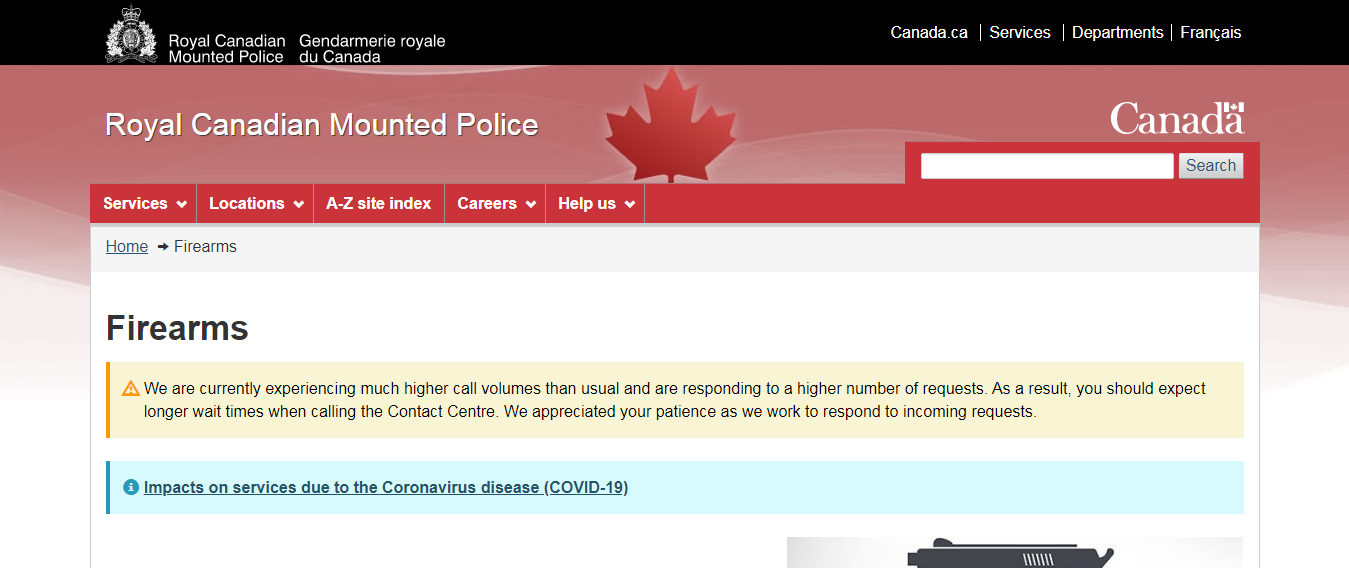How To Apply for Gun / Firearm Licence In Canada
- If you’re looking to apply for an Possession and Acquisition Licence , you have to visit the local unit for licensing firearms. Contact information for various provincial centers are listed in the “Office Locations and Contacts” section.
- The first time applicants have to take the Canadian Firearms Safety Course (CFSC). To locate an instructor, you’ll need to call directly with the Chief Firearms Office (CFO) office or the provider of services in your region – to find an instructor through the Provinces/Territories
 .
.
After the test is finished after which, the participants have to pass the test.
Office Locations and Contacts
Royal Canadian Mounted PoliceRCMP National Headquarters
Headquarters Building
73 Leikin Drive
Ottawa ON K1A 0R2
General inquiries: 613-993-7267
TTY: 613-825-1391
Fax: 613-993-0260
What Are All TheEligibility
For those of 18 years and older: The Possession and Acquisition Licence (PAL) is the sole license currently available to new applicants.
Fees
To find out what the fee structures are currently in place, prospective applicants need to get in touch with for the Canadian Firearms Program by calling 1-800-731-4000.
Validity
The Possession and Acquisition Licence (PAL) is renewed every five years.
Documents to Utilize
Instructions
Canadian Firearms Safety Course
In order to be able to apply for the Possession and Acquisition Licence, applicants must complete the Canadian Firearms Safety Course (CFSC). This course is required for those who apply for their first licence. OncCanada Apply for Gun or Firearm License. Once the course is completed, applicants are required to take the required tests.
The subjects covered in the CFSC include:
- the evolution of firearms, the major parts, types , and actions
- fundamental firearm safety practices;
- ammunition;
- Operating firearm actions;
- Secure handling and carrying practices;
- firing methods and protocols;
- security of firearms that are not restricted;
- The responsibilities of the owner/user of the firearm as well as,
- secure security for storage, exhibition, transport and handling of firearms with no restrictions.
Information that could be helpful
Different firearm classes:
- The firearms that are not restricted are rifles that are not restricted in any way, and shotguns other than the ones listed below.
- The firearms that are restricted comprise:
- handguns that aren’t prohibited;
- semi-automatics, centre-fire guns and shotguns that have barrels shorter than 470 millimetres;
- shotguns or rifles that can be fired after their total length has been reduced through folding, telescoping, or any other methods to less than 660 millimeters and
- firearms that are prohibited by Criminal Code Regulations.
- The prohibited firearms are:
- handguns that have a barrel length of 105 millimeters or less, and handguns that fire .25 or .32 calibre ammunition, with the exception for a handful of specific handguns that are used to shoot in International Shooting Union competitions;
- shotguns and rifles which are altered by cutting or other methods such they have a barrel that is lower than 457 mm , or their total length is less than 660 mm.
- Full automatics;
- Converted automatics, specifically full automatics that have been modified to fire only one projectile whenever the trigger is pressed; and
- firearms are prohibited under Criminal Code Regulations.
Other uses for the Document/Certificate
- A firearm license permits the owner to carry and register a gun and to acquire ammunition.
- The license to carry a firearm is required to be maintained for as long as you own weapons in Canada.